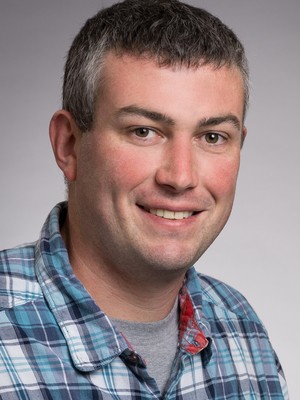People try to do right by each other, no matter the motivation, study finds
Large-scale experiment shows people are more generous than not
People want to help each other, even when it costs them something, and even when the motivations to help don’t always align, a new study suggests.
In research published today in the journal Science Advances, sociologists found that people overwhelmingly chose to be generous to others – even to strangers, and even when it seems one motivation to help might crowd out another.
It is the first study to examine how all the established motivations to be generous interact with one another.
 “We wanted to do an exhaustive study to see what the effects of those motivations would be when combined – because they are combined in the real world, where people are making choices about how generous or kind to be with one another,” said David Melamed, lead author of the study and an associate professor of sociology at The Ohio State University. Melamed is also affiliated with Ohio State’s Translational Data Analytics Institute.
“We wanted to do an exhaustive study to see what the effects of those motivations would be when combined – because they are combined in the real world, where people are making choices about how generous or kind to be with one another,” said David Melamed, lead author of the study and an associate professor of sociology at The Ohio State University. Melamed is also affiliated with Ohio State’s Translational Data Analytics Institute.
The study involved more than 700 people, and was designed to help researchers understand prosocial behavior.
“It means doing something for someone else at a cost to yourself,” Melamed said. “So one example would be paying for the person behind you’s order at the coffee shop. Or right now, wearing your mask in public. It’s a cost to you; it’s uncomfortable. But you contribute to the public good by wearing it and not spreading the virus.”
Scientists previously had determined that four motivators influenced people to behave in a way that benefited other people.
One: The recipient of a kindness is inclined to do something nice for the giver in return. Two: A person is motivated to do something nice to someone that she saw be generous to a third person. Three: A person is likely to do good in the presence of people in their network who might reward their generosity. And four: A person is likely to “pay it forward” to someone else if someone has done something nice for her.
Those four motivators had all been studied isolated from one another, and some had been studied as a pair. But until this experiment, scientists had not conducted a comprehensive study about how the four motivators might affect one another in the real world, where the motivation to be kind to others might be influenced by multiple factors.
“In the real world, the conditions under which people are nice to each other are not isolated – people are embedded in their networks, and they’re going about their daily lives and coming into contact with things that will affect their decisions,” Melamed said. “And these experiments show that all the motivations work. If you want to maximize prosocial behavior, it was a really great thing to see.”
For this study, which was done online, participants had to decide how much of a 10-point endowment to give to other people. The points had monetary value to the participants; giving cost them something.
Then the researchers created different scenarios that combined one or all four of the potential motivators for giving.
Melamed said that prior to the experiment, he thought the motivations for kindness might crowd one another out.
For example, a person may be less apt to indirectly reward another’s generosity toward a third person when he is focused on directly giving back help that he received.
“People have a self-bias,” he said. “If you do something nice for me, I may weigh that more than if I see you do something nice for someone else. But we found that all the motivators still show up as predictors of how much a person is willing to give to someone else, regardless of how the differing motivators are combined.”
This research helps us understand the remarkable quantity and diversity of prosocial behavior we see in humans, Melamed said.
“From an evolutionary perspective, it’s kind of perplexing that it even exists, because you’re decreasing your own fitness on behalf of others,” Melamed said. “And yet, we see it in bees and ants, and humans and throughout all of nature.”


